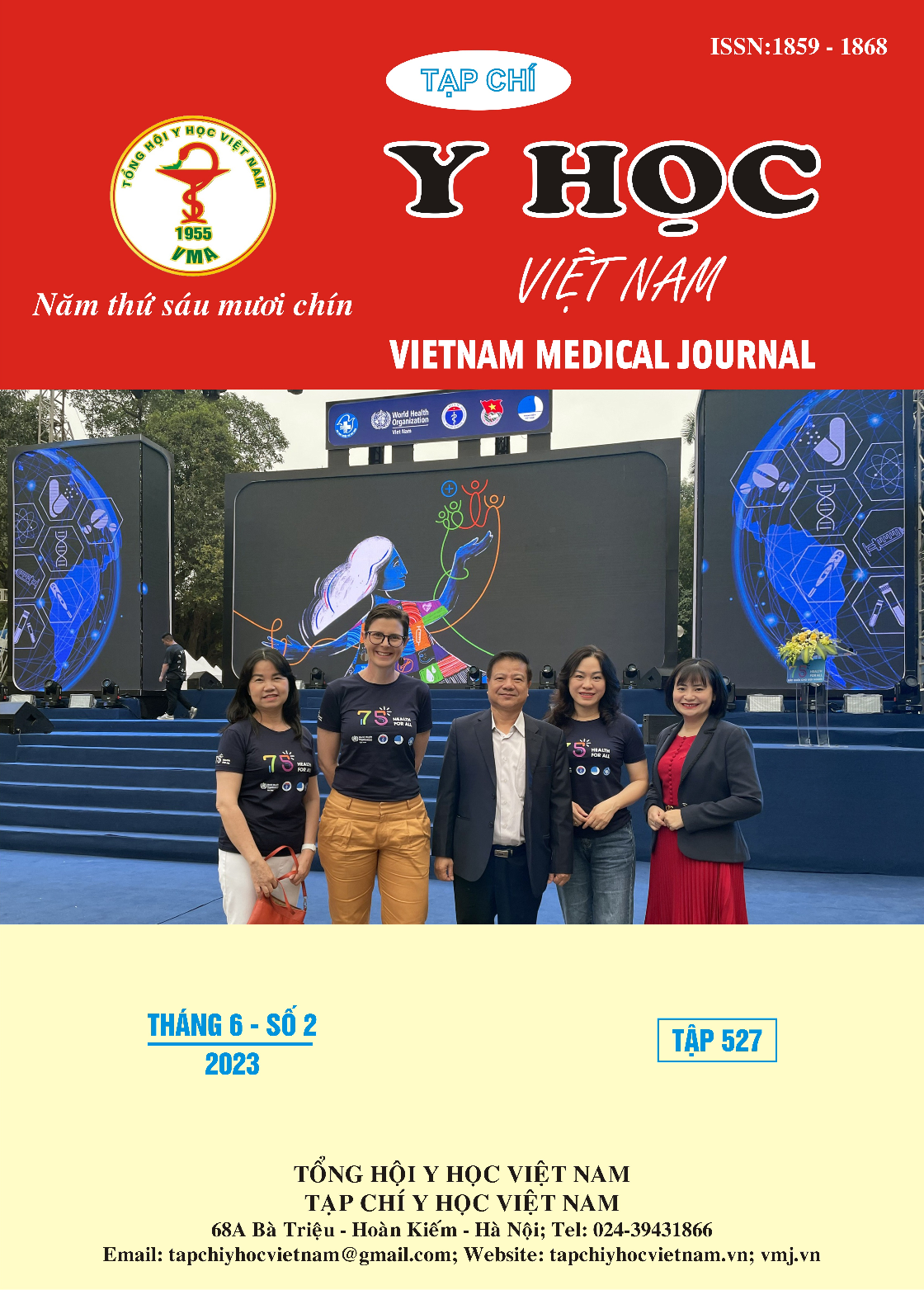PREVALENCE OF ANEMIA AND ASSOCIATED FACTORS AMONG PREGNANT WOMEN IN HUNG VUONG HOSPITAL 2021
Main Article Content
Abstract
Introduction: Anemia in pregnancy is one of the common public health problems in Vietnam and all over the world. During pregnancy, aemia can cause adverse outcomes for both mother and infant. Objective: To determine the prevalence of anemia and associated factors among pregnant women in Department of Examination B, Hung Vuong Hospital in 2021. Subjects and methods: A cross-sectional study was conducted from March to May 2021. Convenience sampling method was used to include 255 pregnant women who has come for antenatal care at the Department of Examination B, Hung Vuong hospital. Results: The rate of anemia was 14.1% (with 83.3% mild anemia, 16.7% moderate anemia). Factors related to anemia in pregnancy were maternal age, number of pregnancies, number of births, gynecological diseases, frequency of tea and meat consumption. Conclusion: There should be specific recommendations for prevention and intervention to special population such as pregnant women over 35 years-old, gravidity from 3 times or more, gynecological diseases, and should be counselled suitable diet.
Article Details
Keywords
anemia, anemia in pregnancy, pregnant women
References
2. Bondevik GT, Eskeland B, Ulvik RJ, et al (2000). Anaemia in pregnancy: possible causes and risk factors in Nepali women. European Journal of Clinical Nutrition, 54(1):3-8.
3. Gudeta TA, Regassa TM, Belay AS (2019). Magnitude and factors associated with anemia among pregnant women attending antenatal care in Bench Maji, Keffa and Sheka zones of public hospitals, Southwest, Ethiopia, 2018: A cross -sectional study. PLoS One, 14 (11):e0225148.
4. Trần Khánh Vân (2018). Dinh dưỡng với phát triển kinh tế xã hội và một số chỉ số về tình hình dinh dưỡng hiện nay tại Việt Nam, http://viendinhduong.vn/vi/tin-tuc/dinh-duong-voi-phat-trien-kinh-te-xa-hoi-va-mot-so-chi-so-ve-tinh-hinh-dinh-duong-hien-nay-tai-viet-nam.html, truy cập 20/10/2020.
5. Bệnh viện Hùng Vương. Tổng quát về bệnh viện, https://bvhungvuong.vn/gioi-thieu/gioi-thieu-tong-quat-ve-benh-vien, truy cập 14/10/2020.
6. Đặng Hải Đăng, Nguyễn Thanh Dân, Trần Thị Thúy An, Trần Thị Trúc Huệ (2020). Tỷ lệ thiếu máu, thiếu máu thiếu sắt và một số yếu tố liên quan của phụ nữ có thai đến khám tại Bệnh viện Đa khoa Cái Nước, tỉnh Cà Mau năm 2017 – 2018, Tạp chí Y học dự phòng, 30(1):102.
7. WHO (2011) Haemoglobin concentrations for the diagnosis of anaemia and assessment of severity, pp. 3.
8. Trần Thị Minh Hạnh, Phan Nguyễn Thanh Bình, Nguyễn Nhân Thành, Lê Nguyễn Trung Đức Sơn, Trương Công Hòa, Phạm Ngọc Oanh, et al. (2008). Tình trạng thiếu máu thiếu sắt ở thai phụ Thành phố Hồ Chí Minh. Tạp chí Y học TP.HCM, 12 (04):141.
9. Lebso M, Anato A, Loha E (2017). Prevalence of anemia and associated factors among pregnant women in Southern Ethiopia: A community based cross-sectional study. PLoS One, 12(12): e0188783.
10. Võ Thị Thu Nguyệt, Bành Thanh Lan, Trần Thị Lợi, Phạm Quí Trọng (2008). Khảo sát tình trạng thiếu máu thiếu sắt trong 3 tháng giữa thai kỳ và các yếu tố liên quan tại Đại học Y dược Thành phố Hồ Chí Minh. Tạp chí Y học TP.HCM, 12 (Phụ bản số 1):162-170.


